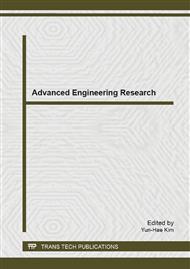p.1405
p.1412
p.1418
p.1424
p.1428
p.1433
p.1438
p.1443
p.1448
The Research of the Car Following Behavior Model in VANET
Abstract:
Based on the characteristics of the car-following model and analyzing from the angle of traffic engineering, this paper classifies car following models into four categories, that is, the stimulus-response model, the safe-distance model, the psychology-physiology model and the artificial intelligence model. In addition, it expounds the modeling ideas, the model structures as well as the advantages and disadvantages of these models. Finally it points out the development tendency and the direction of study method of modeling of car-following model to show direction and provide important reference for establishing car-following models suitable for Chinese traffic characteristics.
Info:
Periodical:
Pages:
1428-1432
Citation:
Online since:
April 2014
Authors:
Price:
Сopyright:
© 2014 Trans Tech Publications Ltd. All Rights Reserved
Share:
Citation:


